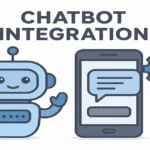Introduction
In today’s digital era, marketing is not the same as before. Earlier, companies used to make marketing strategies for years and gradually implement them, but now times have changed. Changing trends, the fast pace of social media, and the changing needs of customers have completely reshaped the world of marketing. This is the reason why “Agile” is being discussed everywhere now.
Agile Marketing is an approach in which small and flexible steps are taken instead of long and complex plans. Its purpose is to make the marketing team so fast and smart that they can achieve results by adopting changes immediately. In today’s time, when marketing channels, customer preferences, and business trends keep changing every day, Agile Marketing is the most effective way to keep companies ahead in the competition.
What is Agile Marketing?
The world of marketing is always changing. TV ads were once the biggest weapon, then came newspapers and radio, and now digital platforms like social media, email, blogs, and online ads have become the backbone of marketing. In such an environment, if a company works in old ways, it will be left far behind. The way to adopt this change and move forward quickly is Agile Marketing.
Definition
Agile Marketing is a marketing approach in which small, flexible, and fast steps are taken instead of long and rigid plans. Its purpose is that the marketing team can immediately adjust its strategy according to changing circumstances, customer needs, and market trends.
- Agile Marketing Mindset
- Agile Marketing is not just a technique or tool, but it is a way of thinking. Its focus is –
- Customer-centric approach
- Adaptability
- Experimentation
- Data-driven decisions
Why Agile Marketing Matters?
Today’s business environment is more uncertain and fast-paced than ever before. Customer preferences are changing every day, new technologies are emerging every day, and the market is more competitive than ever. In such times, if a company or brand sticks to old, rigid marketing strategies, it can easily be left behind. This is where Agile comes in handy.
1. Understanding changing customer behavior
- Customers today spend more time on smartphones, social media, and online platforms. Their needs and preferences can change every month. With the help of Agile, companies can immediately catch these changes and change their strategy to give customers what they want.
2. Fast Experimentation
- In old marketing, it used to take months to create and launch a campaign. If it did not succeed, all the money and time were wasted. But in Agile, small experiments are done. If something works, it is taken forward immediately, and if it doesn’t, a new strategy is adopted without delay.
3. Opportunity to stay ahead of the competition
- Competition has increased in every industry. Agile makes companies so flexible that they can respond quickly to competitors and maintain their hold in the market.
4. Better team collaboration
- Agile promotes teamwork. In this, the entire team works on short sprints, regularly reviews its progress, and takes quick decisions together. This increases both the efficiency and morale of the team.
5. Saving of time and resources
- Because Agile does not depend on big and long plans, it takes less time and resources. If a campaign fails, there is no loss of months; rather,r work starts in a new direction in a few days.
Key features of Agile Marketing
Agile is not just a strategy but a flexible and modern approach that makes marketing faster and effective in today’s digital age. It has some special features that make it different and better than traditional marketing. Let’s understand in detail:
1. Short Sprints
- The biggest feature of Agile is that it does not depend on long and months-long campaigns. In this, the work is divided into small “sprints”.
- Each sprint is of 1 to 2 weeks.
- The team works on a specific goal.
- The result is seen at the end of the sprint, and the strategy is decided for the next sprint.
- This leads to continuous improvement in marketing.
2. Data-Driven Decisions
- Every step of Agile is based on data and analytics.
- The team tracks the results of every campaign.
- By looking at the data, it decides which strategy is working and which is not.
- Decisions are made based on correct facts and figures instead of guesswork.
- This improves ROI (Return on Investment).
3. Flexibility & Adaptability
- In today’s time, customer preferences and market trends change every day. The strongest aspect of Agile is that it gives the ability to adopt change immediately.
- If a campaign is not working, it can be changed midway.
- New strategies can be implemented quickly.
- This saves time and resources.
Case study: Agile Marketing success story
The true power of Agile Marketing is understood when we look at the experiences of companies that have adopted it in practice. Here is a real example (success story) that tells how Agile changed the fortunes of a brand.
Background
A medium-sized e-commerce company wanted to reach new customers for its online store. The main focus of the company was –
- Increasing traffic to its website
- Accelerating sales
- Improving customer experience
- Using a traditional marketing approach, they ran large campaigns for several months. But the problem was that –
The Challenge
The team realized that the market is constantly changing. If they do not adjust their strategy quickly, they will fall behind the competitors. For this reason, the company decided to adopt the Agile Model.
The Solution with Agile Marketing
- The company took certain steps to adopt Agile:
How to use Agile Marketing?
Agile is as attractive as it sounds, it is equally easy and effective to adopt – if done correctly. It is not just about adopting new technology, but it is a new way of thinking and working. Let us know in detail how any company or team can use Agile in their business.
1. Set clear goals
- Before adopting Agile, it is important to decide which goals your team wants to work on.
- Do you want to increase brand awareness?
- Is your focus on customer engagement?
- Or do you want to increase direct sales?
2. Divide the work into small sprints
- The backbone of Agile is “sprints”.
- Each sprint should be of 1 to 2 weeks.
- In this, the team should focus on only 1–2 main tasks.
3. Do continuous experimentation
- The real magic of Agile is to do fast and small experiments.
- Test different images and headlines in social media ads.
- Do A/B testing in email marketing to see which subject line gets a higher open rate.
4. Trust data and analytics
- In Agile, the focus is on data instead of guesswork.
- Track the results of the campaign after each sprint.
- Use tools like Google Analytics, social media insights, and email reports.
5. Increase team collaboration
- Agile is not just one person’s job. It requires the cooperation of the entire team.
- Have a small stand-up meeting every day, in which each member explains what he did and what help he needs.
- Maintain transparency in the team so that everyone knows in which direction the work is progressing.
Conclusion
In today’s digital age, where new trends and changing customer needs emerge every day, the traditional marketing approach is no longer sufficient. Now companies and brands need a strategy that is fast, flexible and can change instantly according to customer preferences. This is the power that Agile gives.
- Agile is not just a marketing strategy, but a mindset –
- It involves small experiments instead of long and complex plans.
- Decisions are made based on data and analytics.
- The entire team works with collaboration and transparency.
- Customer feedback is always given priority.
The result is that companies constantly learn, improve, and deliver better performance. This not only increases ROI (Return on Investment), but the brand also becomes stronger among the customers.
FAQ
Q1. What is Agile Marketing in simple words?
Agile Marketing is a flexible marketing approach where teams work in short cycles (sprints), test ideas quickly, use customer feedback, and make data-driven decisions instead of following long, rigid plans.
Q2. Why is Agile Marketing important for businesses?
It helps businesses adapt to market changes faster, experiment with new strategies without wasting time or money, and stay ahead of competitors by being more customer-focused.
Q3. How is Agile Marketing different from traditional marketing?
Traditional marketing relies on long-term planning and big campaigns, while Agile focuses on short, iterative campaigns, real-time testing, and continuous improvement.
Q4. What are the key benefits of Agile Marketing?
- Faster campaign execution
- Better team collaboration
- Data-driven insights
- Improved ROI
- Stronger customer satisfaction
Q5. Can small businesses use Agile Marketing?
Yes! In fact, Agile is especially useful for small businesses because it allows them to test ideas quickly, save resources, and grow without huge marketing budgets.
Curious about smart transportation and digital growth? Head over to Digital Pracer’s blog and explore content that keeps you ahead of the curve!








